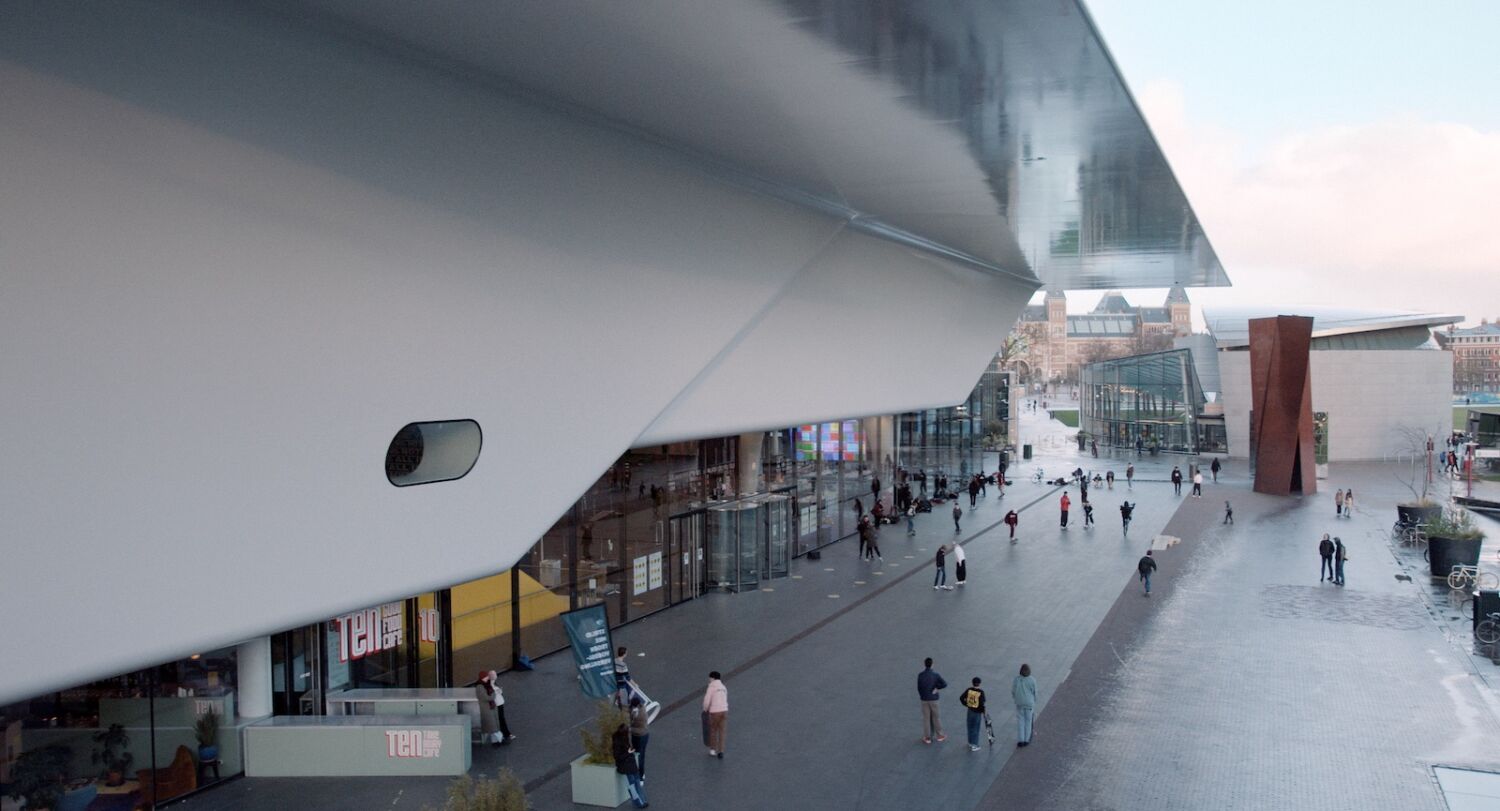Review: A Dutch art institution’s sometimes awkward attempt to transform

It’s not meant to be a mockumentary but there are moments in the art-centric doc “White Balls on Walls” in which it’s hard to know just how firmly some subjects’ tongues might be planted in cheek.
The film, directed by Sarah Vos, follows the vital, intricate journey of Amsterdam’s famed Stedelijk Museum of Modern and Contemporary Art and Design to diversify its staff and collection to better reflect the world outside its white-male-dominated walls — and, not for nothing, remain eligible for municipal funding. Given that, at the start of shooting in 2019, more than 90% of the museum’s art was created by white men, Stedelijk Director Rein Wolfs and his all-white team have their work cut out for them. (The movie’s playful title is borrowed from a slogan used in a 1995 protest of the museum by the art-world activist group Guerrilla Girls.)
Although this kind of inclusive transformation has become increasingly common in many public and private institutions and fields, what happens at the Stedelijk offers a kind of microcosmic look at what it takes to present as suitably and accurately diverse. As shown here, it’s an often-exacting process that can require a crash course in enlightenment and sensitivity for even the most open and equitable-minded folks — and that may include the film’s audience.
Vos’ cameras mainly take a fly-on-the-wall approach as the museum leaders struggle to rethink their longtime choices and perceptions, their role within the community and how they will more aptly fill the Stedelijk’s display spaces moving forward. Still, amid the group’s proactive actions and sincere intentions, irony and bemusement abound, at times worthy of a Christopher Guest outing.
Wolfs and company’s first major step toward inclusivity is the hiring of Charl Landvreugd, a Black, Suriname-born artist, researcher and academic, as head of research and curatorial practice. He’s tasked with diversifying the Stedelijk’s strategies and collection, the goal being to move beyond the work of non-Western European and North American artists, heretofore touted by the museum as “The Icons of Modern Art.” (That slogan gets peeled away here both literally and figuratively).
The charismatic Landvreugd proves an essential, complementary presence to Wolfs and the other white staffers, though it’s clear they’re not always instantly in sync with some of his more distinctive ideas. But that’s partly why he’s there: to expand and edify their thinking, which he attempts to do gently and judiciously.
Vincent van Velsen, a Black writer and art historian who had been openly critical in the past about the Stedelijk’s systemic lack of inclusion, is also brought on as curator of photography. It’s a bold, positive move and Van Velsen offers a candid take on the value of his hiring.
Along the way, a host of art-related issues and theories involving racial, ethnic and gender representation and the precise use of language (or what some may deride as “political correctness”) are examined and discussed by the museum team. These include updating the titles of certain pieces (i.e., should “sex worker” be used in place of “prostitute?”), the privilege of the white gaze in art, and the decolonization of art and its contextualization (the cultural, historical and religious circumstances in which a work was made). If you’ve rarely thought of these insidious matters while strolling through a museum, that’s the point.
On a more basic note, when the museum’s bathrooms are redesignated to be gender neutral, a head security guard refers to them as “transgender.” Yes, one misused word can speak volumes.
Less seems to be made of the quality of the Stedelijk’s collection as it undergoes diversification than the fact that it is fulfilling the museum’s greater sociocultural ambitions and potential appeal. It’s an aspect worth examining, but Vos largely avoids editorial comment, leaving that to the film’s audience.
When, at the end, museumgoers weigh in on the obvious changes to the Stedelijk, it seems to reflect society’s inevitable cross-section of opinions on all things inclusionary.
There are a few missed opportunities here. For a narrative that leans heavily on the need for artistic context, the film is light on presenting the museum and its diversity initiative more broadly. Let’s just say, except for a visit to a local art collector, the movie doesn’t get out much.
We also learn little about the many museum staffers beyond their immediate concerns for the mission at hand. It doesn’t make the doc feel impersonal or less urgent as much as limited in depth and scope.
No matter, kudos to the Stedelijk for opening itself up to such firsthand scrutiny and to Vos for spotlighting such a vastly relevant topic in a way that’s both insightful and entertaining.
‘White Balls on Walls’
In Dutch and English with English subtitles
Not rated
Running time: 1 hour, 30 minutes
Playing: Starts June 2, Laemmle Royal, West Los Angeles
For all the latest Entertainment News Click Here
For the latest news and updates, follow us on Google News.
